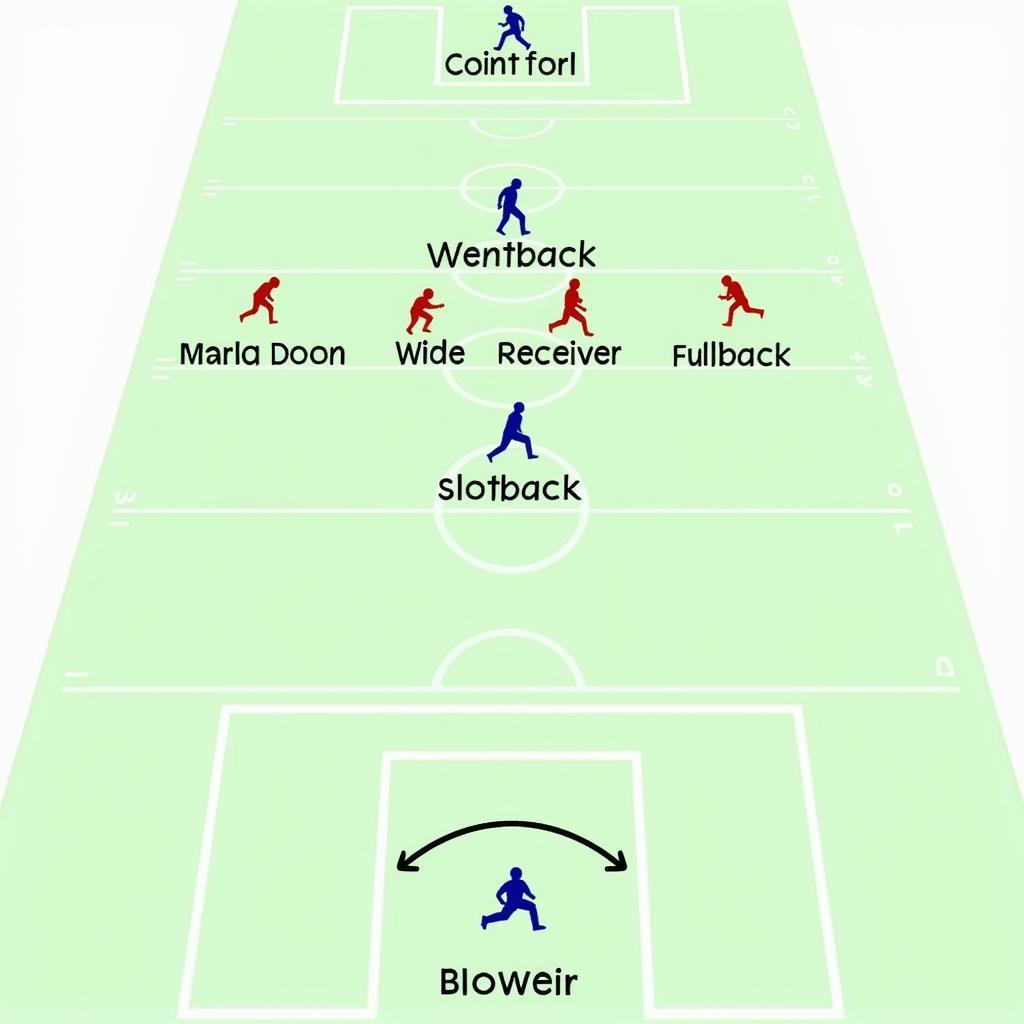Mastering the Flexbone Offense Playbook
October 27, 2024The Flexbone Offense Playbook is a thing of beauty for those who appreciate the art of deception and misdirection in football. It’s like a perfectly choreographed dance, with each player’s movement designed to keep the defense guessing. This article dives deep into the intricacies of the flexbone offense, exploring its history, key plays, and strategies for success.
 Flexbone Formation Diagram
Flexbone Formation Diagram
A Blast from the Past: Origins of the Flexbone
The roots of the flexbone offense can be traced back to the wishbone formation popularized in the 1960s and 70s. Coaches seeking to enhance the option game’s effectiveness further developed the flexbone, adding an extra layer of deception. This offensive scheme rose to prominence in college football, with teams like Georgia Tech and Navy achieving remarkable success by utilizing its unique strengths.
Deciphering the Flexbone Formation
The flexbone formation gets its name from the distinctive alignment of the offensive line and backfield. Imagine this: the quarterback lines up under center, flanked by two slotbacks positioned slightly behind the line of scrimmage. Behind the quarterback sits the fullback, ready to charge forward or slip out into a passing route. The wide receivers, typically spread wide, add another dimension to the attack.
 Flexbone Option Play in Action
Flexbone Option Play in Action
The Triple Option: The Heart of the Flexbone
At the core of the flexbone offense lies the triple option, a play designed to keep defenses constantly off-balance. Here’s how it works: the quarterback receives the snap and has three options: hand the ball off to the fullback for a dive up the middle, pitch it to a trailing slotback running towards the sideline, or keep the ball himself and exploit any openings in the defense. This multifaceted attack forces defenses to account for multiple threats simultaneously, creating opportunities for big plays.
Beyond the Triple Option: Expanding the Playbook
While the triple option is undoubtedly a staple of the flexbone offense, it’s not the only weapon in its arsenal. The formation’s versatility allows for a variety of plays, including:
- Counter Plays: Designed to exploit aggressive defenses, counter plays involve misdirection and often feature pulling linemen creating running lanes for the fullback or slotbacks.
- Passing Plays: While the flexbone is primarily known for its running game, effective passing plays can keep defenses honest. Play-action passes, utilizing the threat of the run, can be particularly potent.
- Option Routes: Receivers run routes that vary based on the defensive coverage, giving the quarterback multiple passing options.
The Flexbone Advantage: Keys to Success
Several factors contribute to the effectiveness of the flexbone offense:
- Precision and Timing: Executing plays flawlessly demands precise timing and coordination among all eleven players.
- Discipline and Execution: Success hinges on players adhering to their assignments and executing their blocks with precision.
- Adaptability: The ability to adjust plays based on defensive formations and tendencies is crucial for exploiting weaknesses.
The Future of the Flexbone
The flexbone offense, though not as widespread as other offensive schemes, continues to thrive in specific contexts. High school teams and some college programs continue to find success with its unique approach. The flexbone, with its emphasis on execution and deception, offers a compelling alternative to conventional offensive systems.
FAQ
1. Is the flexbone offense only about running the ball?
While renowned for its powerful running game, the flexbone offense incorporates passing plays to keep defenses guessing.
2. What makes the triple option so challenging to defend?
The triple option’s complexity lies in its multi-threat nature. Defenses must account for the quarterback, fullback, and slotback simultaneously, making it difficult to cover all options effectively.
3. What are the essential qualities of a successful flexbone quarterback?
A flexbone quarterback needs intelligence, quick decision-making abilities, and the athleticism to run and pass effectively.
4. What are some common defensive strategies against the flexbone?
Teams often use aggressive defensive line play and assign specific players to contain the quarterback and the pitch option to counter the flexbone.
5. Where can I learn more about specific flexbone plays?
Check out our articles on flexbone offense plays and the triple option offense playbook for detailed breakdowns and diagrams.
Need Help with Your Flexbone Game Plan?
Contact us at Phone Number: 0915117113, Email: [email protected], or visit us at Tổ 3 Kp Bình An, Phú Thương, Việt Nam, Bình Phước 830000, Việt Nam. Our team is available 24/7 to assist you. You can also find more resources on our website, including information on the 4 corners offense and football split back formation plays.